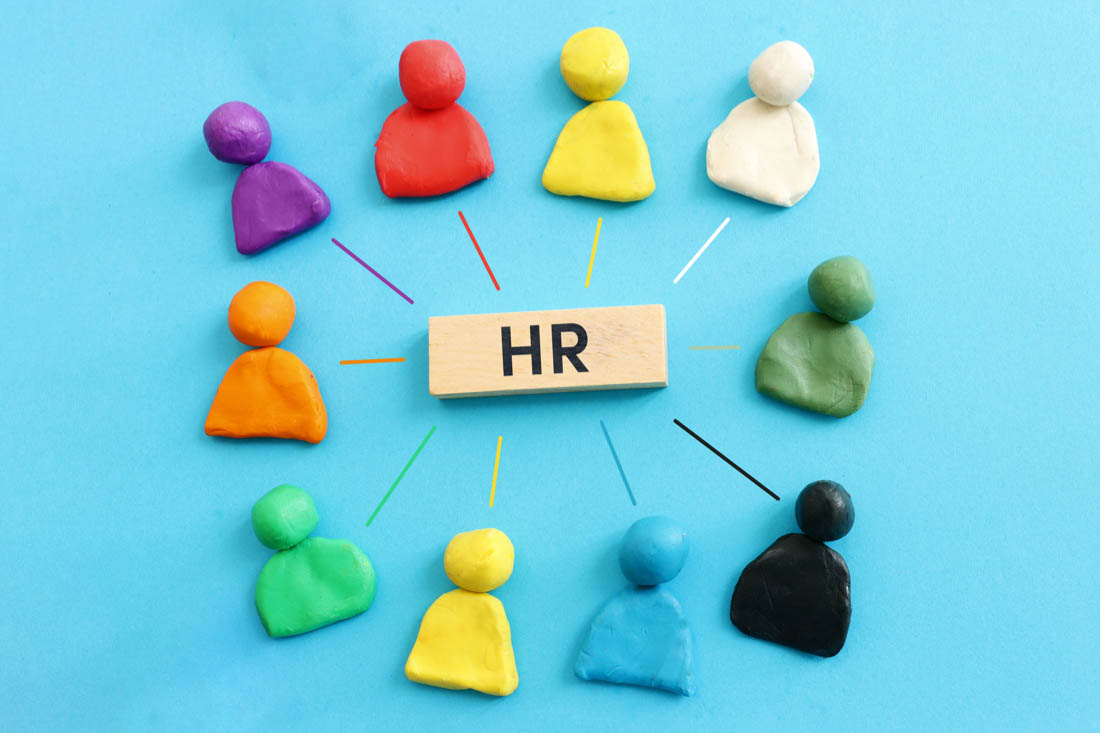What do Google, Johnson & Johnson and Cisco have in common? These thriving brands all rely on HR metrics to boost productivity.
You don’t have to be a global tech giant or major corporation to follow their lead. Whether you have 20 or 12,000 employees, HR metrics are your ticket to stronger recruitment and retention, higher performance and more engagement.
Let’s look at the 10 most crucial HR metrics all business leaders should focus on in 2025 to boost productivity among other benefits.
What are HR metrics?
HR metrics, or people analytics, refers to measuring and analyzing employee data to improve HR functions. Cost per hire, overtime rates and retention rates are all examples of HR metrics. While many enterprise companies have used more advanced talent analytics and workforce analytics for years, recent developments in HR software make this data available to companies with smaller teams.
From recruitment to employee engagement and performance, here’s a preview of the some of the important HR metrics to track:
- Attrition rates
- Employee tenures
- Time to hire
- Engagement levels
- Absenteeism rates
Why are HR metrics important?
HR metrics drive organizational success in many ways. It empowers HR professionals to remove guesswork and gut instinct from important decisions. It serves as the foundation for a data culture. Most importantly, it lays the groundwork for a wide range of employee and employer benefits.
For this reason, successful HR teams use people analytics to predict job candidate success, inform hiring decisions, improve employee well-being and increase productivity.
How to use HR metrics
When used correctly, HR metrics open the door to achieving previously unreachable goals. Start with the questions you currently struggle to answer, such as:
- Do you have the right amount of people to accomplish your goals?
- How long does it take to fill open positions?
- How much does it cost you?
- Do you lose money to preventable absenteeism?
Once you start tracking HR metrics that map to these questions, it’s much easier to address them. The key is to look at the right metrics for your workforce.
The 10 most important HR metrics
With the latest advancements in HR analytics, you can track dozens or even hundreds of metrics. To keep it manageable, we recommend starting with these 10 key productivity-boosting HR metrics.
1. Headcount
Labor now accounts for as much as 70% of a typical company’s total business costs. This makes accurate headcount planning critical. By measuring headcount, you’re continually assessing the total number of employees in your company at any given time.
This may sound like a simple metric, but the number shifts frequently — especially if you have part-time employees and contractors. Monitoring headcount changes over time makes it easy to plan for future changes, such as seasonal hiring or department expansions. It’s also crucial for optimizing productivity to ensure you have the right amount of employees at all times. Having too many employees can decrease productivity because people are underutilized, while being short-staffed can lead to people to being overworked which also detracts from productivity. Actively measuring headcount helps you maintain the ideal number of employees for maximum productivity.
2. Diversity
A diverse workforce positions you to compete by bringing more perspectives and ideas to the table, resulting in more innovation, greater productivity and stronger performance. The best way to ensure diversity is to regularly measure employee metrics such as locations, ethnicities, age groups and genders. This data will reveal if you have a strong mix of backgrounds — or if you need to diversify your recruitment process to cover certain areas.
3. Turnover rate
Studies show it costs at least $4,700 to hire a new employee, and some experts say costs can climb to as much as four times a position’s salary. Given these startling stats, you can’t afford not to monitor your turnover rate.
Employee turnover measures how often employees leave your company. Or, put another way, it shows how successful you are at retaining top talent. A high turnover rate is usually an indicator of low engagement, poor morale or a toxic culture. High turnover also decreases productivity from these factors because new employees may take a while to ramp up. If your turnover rate is consistently high, it means you may have a revolving door which indicates you need to revamp your recruitment process to ensure you’re hiring the right people for each job based on skills and culture fit.
4. Attrition rate
While your employee turnover rate changes when someone leaves and is immediately replaced, your attrition rate reflects permanent losses. This metric tells you when open positions go unfilled for extended periods or are eliminated altogether.
Monitoring attrition rate yields valuable insights for business leaders. If attrition rate is high while open positions remain unfilled, it indicates a struggle to find replacements which is another indication to reevaluate hiring practices. However, a high attrition rate from eliminated positions isn’t always a negative. A business may see a high attrition rate after eliminating positions, but if performance remains consistent — it can indicate the team found ways to overcome a smaller staff such as more efficient processes to increase productivity. By investigating, you may be able to replicate the effects in other parts of the business.
5. Employee tenure
Employee tenure represents how long people stay with your company. Like turnover and attrition rates, it’s an important workforce planning metric to monitor for insight into workforce stability.
Generally speaking, a higher tenure rate is an indicator of a strong company culture that supports employee well-being and work-life balance. It also means more human capital, since employees who stay longer tend to contribute more knowledge, skills and capabilities acquired from years of growth and development. On the other hand, a tenure rate significantly below the four-year average is a strong indicator of unaddressed problems such as poor team management and unbalanced workloads. Tracking employee tenure and working to retain top performers helps increase productivity and performance through the skills and knowledge they utilize and pass on to others.
6. Time to hire
Time to hire, also known as time to fill, is a recruiting metric that measures the number of days between a successful candidate applying for a job and accepting your offer. It shows how efficient your hiring process is. While experts put the average time to hire across industries at 44 days, many of the best candidates are off the market in 10. Tracking this metric lets you know if your current process is keeping you from hiring top talent. If you’re consistently hiring second and third choices because you missed out on your preferred applicants, consider shortening your hiring process to get the best people to help you maximize productivity.
7. Engagement
Employee engagement measures how committed people are to your company and goals. It goes beyond employee satisfaction to gauge whether employees feel a sense of purpose and fulfillment at work. Because it’s more subjective than other HR metrics, employee engagement is more challenging to measure.
However, it’s an important one to prioritize. Employees who report feeling energized and excited about work are 31% more likely to stay with their organizations and go above and beyond. While many companies rely on surveys and self-reported sentiments, monitoring more objective employee engagement metrics will help give you an accurate picture of where your workforce stands. Keeping an eye on workload balance and employee performance lets you proactively identify and address low engagement before it leads to bigger problems like decreased productivity or turnover.
8. Absenteeism rate
Your absenteeism rate, or absence rate, calculates how many days your employees miss during a given period. More specifically, it looks at unexpected and unplanned time off as well as habitual lateness, early departures and extensive lunch breaks. While it’s typical for teams to experience the occasional unanticipated absence — due to a family emergency or sudden illness, for example — a high overall absenteeism rate indicates something’s wrong. A sudden spike in absenteeism across teams may indicate larger problems like burnout and overwhelm. Keep an eye on absenteeism to ensure larger issues aren’t a factor, as consistently having people miss work reduces the output of your team. It can also decrease productivity by requiring people to handle tasks they aren’t familiar with to cover the responsibilities of people who are out.
9. Employee performance
Employee performance measures how well employees handle their roles and responsibilities. This metric tells you how consistently someone is meeting deadlines and progressing toward goals, and how they improve over time. Many companies track this metric by using workforce analytics software to better understand how much time employees spend on different tasks, which tools they use, and where they may need more support to enhance productivity.
10. Employee productivity
Last but not least, employee productivity measures output versus input. It looks at how much employees accomplish (the output) compared to the amount of resources they use (the input). Reaching a goal is good, but reaching the same goal while holding fewer meetings and doing less busy work is great. While employee productivity may not be the simplest metric to calculate, it’s a crucial HR metric that’s worth tracking. To accurately measure productivity, we recommend using productivity management software that collects several types of data and interprets it into meaningful insights that you can use to inform business decisions. By tracking productivity, you’ll better understand how to improve it based on positive and negative factors that affect it.
Track HR metrics and boost productivity with ActivTrak
HR metrics can transform how you manage your workforce and boost productivity. With data to drive decisions, second-guessing goes out the window. You’ll know when to address issues related to recruitment and retention, where to focus efforts for more engagement and how to improve productivity like never before.
The only question left is which data to collect — and how to analyze it. ActivTrak makes it easy to do both. Our workforce analytics software accurately tracks and reports on a wide range of critical HR metrics including productivity, engagement, headcount and more. Schedule a demo to learn how you can use these powerful analytics tools to monitor HR metrics at your company.





